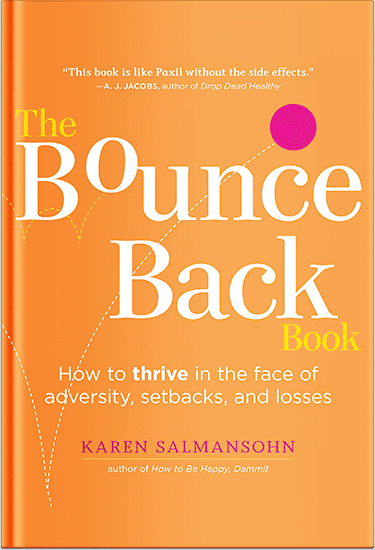 In today’s fast-paced world where the lines between work and personal life increasingly blur, maintaining balance has become more challenging – and more crucial – than ever.
In today’s fast-paced world where the lines between work and personal life increasingly blur, maintaining balance has become more challenging – and more crucial – than ever.
As someone who has navigated these waters both personally and professionally, I’ve learned that achieving work-life balance isn’t about perfect equilibrium, but rather about creating sustainable practices that prevent burnout while still pursuing our goals.
Understanding Burnout: More Than Just Being Tired
Before we dive into solutions, it’s essential to recognize what we’re dealing with. Burnout isn’t simply feeling tired after a long week – it’s a state of physical, emotional, and mental exhaustion resulting from prolonged stress and overwhelm. The World Health Organization officially recognizes it as an “occupational phenomenon,” characterized by energy depletion, increased mental distance from one’s job, and reduced professional efficacy.
Signs of burnout often include:
- Persistent physical and emotional exhaustion
- Cynicism or detachment from work
- Decreased productivity and sense of accomplishment
- Physical symptoms like headaches or sleep disruption
- Isolation from colleagues and loved ones
- Loss of motivation and enthusiasm
If any of these symptoms resonate with you, you’re not alone. Many high-achieving professionals find themselves facing burnout at some point in their careers. The good news is that there are practical strategies to prevent and address it.
1. Set Clear Boundaries and Stick to Them
The foundation of work-life balance lies in establishing and maintaining clear boundaries. Think of these boundaries as the protective walls that keep work from seeping into every aspect of your life.
Practical Steps:
- Establish specific work hours and honor them
- Create a dedicated workspace, especially if working remotely
- Set up “Do Not Disturb” modes on devices after work hours
- Take your full lunch break away from your desk
- Learn to say “no” to additional commitments when at capacity
Remember, boundaries aren’t about limiting your success – they’re about sustaining it long-term. When you protect your personal time, you return to work more energized and creative.
2. Prioritize Physical and Mental Well-being
Your body and mind are your most valuable resources. Without proper care, they’ll eventually fail you, no matter how strong your work ethic might be.
Essential Components:
- Regular exercise (even short walks count)
- Consistent sleep schedule
- Nutritious meals eaten at regular times
- Regular breaks throughout the workday
- Mindfulness or meditation practices
- Regular check-ins with your mental health
For those experiencing severe burnout symptoms, burnout therapy with a mental health professional can provide valuable tools and strategies for recovery and prevention.
3. Create Meaningful Rituals
Rituals help us transition between different parts of our day and signal to our brain when it’s time to shift gears. These don’t need to be elaborate – simple actions can be powerful markers.
Effective Transition Rituals:
- Morning routine to prepare for the workday
- End-of-work ritual (like a short walk or changing clothes)
- Evening wind-down routine
- Weekly planning session
- Regular digital detox periods
These rituals create natural boundaries and help prevent work thoughts from dominating your personal time.
4. Cultivate Life Outside of Work
A fulfilling life cannot be built on work alone. Investing in relationships, hobbies, and personal interests not only makes life more enjoyable but also provides resilience against work-related stress.
Areas to Develop:
- Strong personal relationships
- Engaging hobbies
- Physical activities you enjoy
- Community involvement
- Learning new skills unrelated to work
- Creative pursuits
When you have multiple sources of satisfaction and identity in your life, work challenges become less overwhelming.
5. Practice Strategic Productivity
Working longer hours doesn’t necessarily mean working better. Focus on being strategic with your time and energy rather than just putting in more hours.
Productivity Strategies:
- Use time-blocking for focused work
- Identify your peak energy hours
- Break large projects into manageable chunks
- Regular progress reviews and adjustments
- Delegate when possible
- Focus on high-impact activities
Remember, productivity isn’t about doing more – it’s about achieving what matters most while maintaining your well-being.
The Path Forward
Creating a healthy work-life balance is an ongoing journey, not a destination. It requires regular assessment and adjustment as your life and work circumstances change. Start by implementing one or two strategies that resonate most with you, then gradually build from there.
If you’re currently experiencing burnout, be gentle with yourself. Recovery takes time, and it’s okay to seek help. Professional support through counseling or therapy can provide valuable guidance and tools for managing stress and establishing healthy boundaries.
The key is to remember that your worth isn’t determined by your productivity. By taking care of yourself and maintaining boundaries, you’re not just preventing burnout – you’re setting yourself up for sustainable success and fulfillment in all areas of life.
Final Thoughts
Balance doesn’t mean giving equal time to everything – it means giving appropriate time to what matters most. By implementing these strategies and regularly checking in with yourself, you can create a sustainable approach to work and life that supports both your professional goals and personal well-being.
Remember, small changes can lead to significant improvements. Start where you are, use what you have, and build from there. Your future self will thank you for the investment in creating a more balanced and fulfilling life.
P.S. Before you zip off to your next Internet pit stop, check out these 2 game changers below - that could dramatically upscale your life.
1. Check Out My Book On Enjoying A Well-Lived Life: It’s called "Your To Die For Life: How to Maximize Joy and Minimize Regret Before Your Time Runs Out." Think of it as your life’s manual to cranking up the volume on joy, meaning, and connection. Learn more here.
2. Life Review Therapy - What if you could get a clear picture of where you are versus where you want to be, and find out exactly why you’re not there yet? That’s what Life Review Therapy is all about.. If you’re serious about transforming your life, let’s talk. Learn more HERE.
Think happier. Think calmer.
Think about subscribing for free weekly tools here.
No SPAM, ever! Read the Privacy Policy for more information.
One last step!
Please go to your inbox and click the confirmation link we just emailed you so you can start to get your free weekly NotSalmon Happiness Tools! Plus, you’ll immediately receive a chunklette of Karen’s bestselling Bounce Back Book!


 In today’s fast-paced world where the lines between work and personal life increasingly blur, maintaining balance has become more challenging – and more crucial – than ever.
In today’s fast-paced world where the lines between work and personal life increasingly blur, maintaining balance has become more challenging – and more crucial – than ever. 